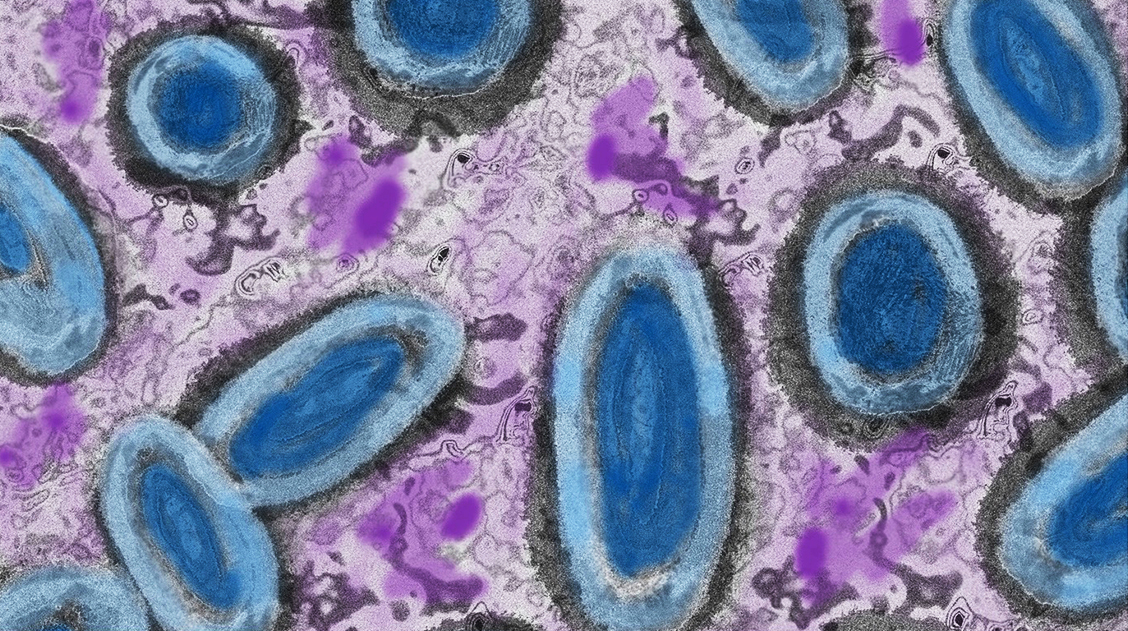
Disseminating Monkeypox Research
Over the past few years, outbreaks of diseases like monkeypox have become a viral topic.
As an academic publisher, we know that we have the responsibility to bring you the facts. Last year, we summarised key differences between COVID-19 and the norovirus. In this article, we’ll go over how monkeypox research can improve our understanding of outbreaks and diseases in general.
Along with COVID-19, monkeypox has been making headlines across the world. Monkeypox is a zoonotic virus, meaning that it is transmitted to humans from animals. Other zoonotic viruses include Ebola and bird flu (avian influenza).
Similarity to Smallpox
To explain the makeup of monkeypox, let’s take a look at another well-known virus. The world eradicated smallpox in 1980, thanks to successful vaccination programs (source). It was an infectious disease caused by two different viruses. Sufferers experienced fever and vomiting. Blisters covered the body. Monkeypox and smallpox are genetically related as they are members of the orthopox genus of the Poxviridae family.
The symptoms are similar to smallpox but clinically less severe. Of these, the most noticeable symptom of monkeypox is the blisters that appear on the skin. These symptoms typically last for 2-4 weeks but can reoccur in severe cases. A couple of big differences between monkeypox and smallpox are host range and virulence. Monkeypox doesn’t spread as easily as smallpox did. This is because smallpox had more virulent genes that the immune system couldn’t keep up with.
Curing Monkeypox
Thankfully, because smallpox and monkeypox are both from the same genus, we can immunize people against monkeypox, using smallpox vaccines.
Monkeypox’s Global Spread
Monkeypox made its way to humans in the 1970s. The Democratic Republic of Congo recorded the first case in 1970. Cases were previously isolated to one continent (Africa), but in 2022, the virus spread around the world. The World Health Organization recorded that, from January to June 2022, there were 3413 confirmed cases. Over half of these were in Europe. The rest were in Africa, the Eastern Mediterranean, the Western Pacific Region, and the Americas.
This is the first occurrence of reported cases in these areas. It usually transmits via close contact and respiratory droplets. However, it has been suggested that the virus is spreading through sexual contact. The recent outbreak could be due to biological changes in the virus or unrelated changes in human behaviour. This includes the relaxation of COVID-19 measures and reduced immunity to the smallpox virus over time.
Should We Be Worried About Monkeypox?
For most people, monkeypox is a minor inconvenience. However, for those who are vulnerable or immunocompromised, it can be fatal. Even then, there is hope. We can treat vulnerable patients with more severe infections using antiviral medications.
Scientists report that monkeypox is not as transmissible as COVID-19. It’s therefore unlikely that the virus will spread in this way. It’s also extremely unlikely that it will lead to a pandemic.
As previously mentioned, we can prevent monkeypox infection using smallpox vaccines. Unfortunately, these vaccines are currently in short supply. Because of this, most countries currently only vaccinate those exposed to the virus.
Recent Research
However, there are gaps in vaccine knowledge when it comes to the smallpox vaccine.
Researchers have been studying and trying to improve the vaccine for over two decades. They have produced a lot of data from these experiments. The vaccines are becoming more targeted because of this. In a study in Viruses, researchers purified monkeypox in an attempt to remove cellular and viral contaminates from the inoculum. They found advantages to using unpurified material for intravenous exposures, including a potential decrease in virus aggregation, suggested to increase the survival of viruses in the host.
There is also a great amount of research on the diagnosis of monkeypox. As it belongs to the orthopox genus, it is similar to smallpox, as discussed. It is also similar to a range of other diseases in this group. This includes chickenpox and herpes simplex. They often present similar symptoms. This makes patient diagnosis very difficult. Researchers in Israel tackled this by producing a rapid genetic-based diagnostic tool for the specific identification of monkeypox.
Preventative Measures
We can prevent monkeypox infections. Methods include:
- Avoiding close contact with those infected;
- Maintaining good personal hygiene by washing hands frequently and thoroughly;
- Wearing personal protective equipment when coming into contact with or caring for those infected with the virus.
We hope this post has made you feel more informed and less anxious.
Written collaboratively by Daniella Maritan-Thomson and Katherine Bosworth.










